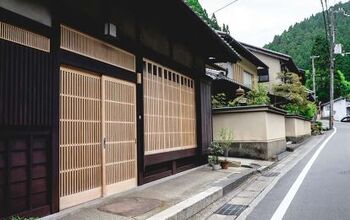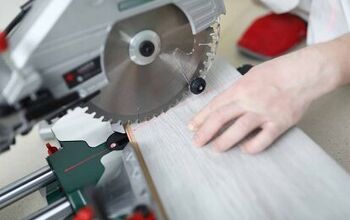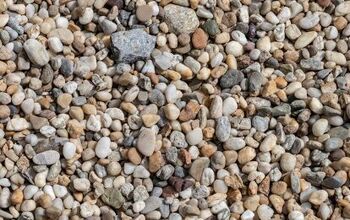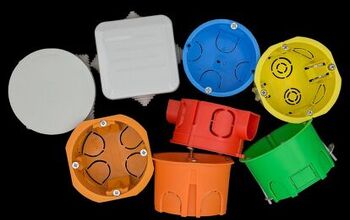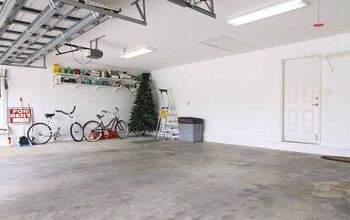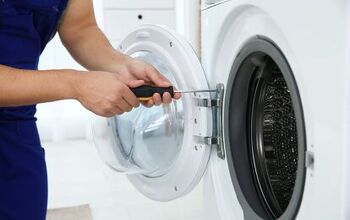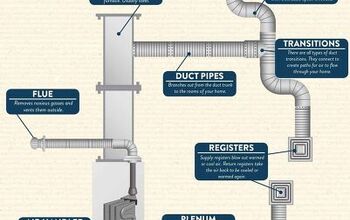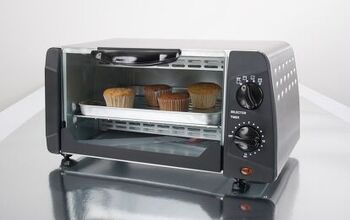14 Outdoor Items You Should Store Indoors This Winter

When winter rolls in, all activities begin moving indoors. There are no more long pool days, fewer evenings by the fire pit, and even mowing the lawn becomes a thing of the past. As you move your daily activities inside the home, you may wonder what outdoor items you should bring indoors as well.
As you transition your yard and outdoor spaces from summer to winter, you must move many items to shelter for protection. Clay pots, hoses, and metal garden tools should all be brought indoors to the garage or shed. Ensure all electronics, including outdoor speakers, are brought inside. All patio and pool furniture should be covered or brought inside, as should hammocks, swings, and anything with fabric.
It’s easy to take your outdoor space for granted and assume everything will look the same once the winter snow thaws and spring returns. However, many outdoor items should be protected from the harsh weather that winter brings. Knowing what items to bring inside and why it’s important to store them will ensure these products stay in great condition for years.
14 Outdoor Items You Should Move To Shelter This Winter
1. Clay And Terracotta Items
Clay pots make excellent vessels for many garden plants. They are great at controlling moisture and have an earthy and organic look that fits with nearly any garden aesthetic. If you want these pots to last for many years, you need to care for them.
One way to care for clay and terracotta pots is to bring them indoors each winter. Clay and terracotta are porous, which allows them to absorb water. This is great for plants that live in the pots, but this feature means they can easily crack and even break when temperatures dip below freezing. If you experience cold winters, you should bring your clay pots indoors to protect them from cold and wet weather.
2. Pool And Patio Furniture
If you have outdoor furniture that’s easy to move, find a winter shelter for it. Some patio furniture can be left outside in the winter, but almost all outdoor furniture lasts longer if stored indoors in the winter.
Any wicker, plastic, wood, and metal furniture will break down more in winter’s extreme weather conditions. The better you protect your outdoor furniture in the winter, the longer it will last.
3. Hammocks And Swings
Swings and hammocks make for great outdoor seating but are very vulnerable to harsh winter weather. Hammocks almost always have metal and cotton material. Cotton can become moldy and break down in extreme winter weather, and the metal chains on both hammocks and swings can rust. Storing these items indoors in the winter and cleaning them thoroughly will keep them looking new for longer.
4. Outdoor Speakers And Other Electronics
Just because your outdoor electronics are waterproof, doesn’t mean they like staying outside in a snowstorm. Extreme cold temperatures combined with ice can damage even the sturdiest outdoor electronics.
Cold temperatures can break brittle parts and cause extensive damage. Bring your outdoor electronics indoors before the first frost, or even at the end of the summer when you stop using most of this equipment.
5. Mowers And Other Lawn Equipment
If you live somewhere with cold winters, there comes a point when you stop mowing your lawn for the year. You should prepare your mower for spring by cleaning and storing it after you mow your lawn for the last time.
This ensures it won’t suffer rust and other damage throughout the winter months when it isn’t used. Bring in any other lawn equipment, including spreaders, trimmers, and weed whackers.
6. Garden And Pool Chemicals
In peak summer months, you can usually store your pool chemicals and lawn care sprays outside. Once the winter hits, however, these potentially toxic chemicals should be brought into a stable environment.
Any liquid chemicals should be stored in a place where temperatures don’t drop below freezing. Pool chemicals should be covered and stored somewhere safe like your garage to prevent moisture from seeping in.
7. Potting Soil And Seed Bags
If you are always working on garden projects, you likely have bags of potting soil, seeds, and mulch in various outdoor areas. While this may be handy in the summertime, you should find a secure indoor home for these items in the winter.
Certain pests like rodents and insects will try to make a home in or feed off these bags in cold months. Even if pests don’t get to them, winter storms and the moisture that comes with it can seep into the bags and damage what’s inside.
8. Wooden Furniture And Decorations
Wood is one of the most common building materials for outdoor furnishings and decorations. Most types of wood, however, don’t love spending long winters exposed to harsh weather. Wood is porous (some types of wood more than others) and when it is wet and freezes, cracks can form. Long wet winters can also make outdoor wood furnishings more susceptible to rot and mold.
9. Metal Tools
It’s common to hang metal tools outdoors to access them easily during peak gardening season. When you finish your outdoor fall maintenance, however, you must clean your metal tools and store them somewhere protected from the elements.
This will greatly reduce the risk of rust and weather damage. In turn, your metal tools should last much longer.
10. Outdoor Rugs
If you have any outdoor rugs on your property, put them away before the winter hits. Ensure you clean the outdoor rug and allow it to dry completely before you roll it up.
Store it somewhere that is protected from moisture, extreme cold and direct sunlight. This will help it look new longer than if you leave it outside all winter.
11. Garden Hoses
One common outdoor tool that gets overlooked for winter storage is the garden hose. Garden hoses are usually made of rubber and man-made materials. While durable and often long-lasting, the weather extremes in the winter can break down this material.
Over time, the hose can weaken and cracks can form. This damage will require you to repair your garden hose. If you won’t use your hose this winter, coil it up and store it somewhere with stable temperatures.
12. Garden Sculptures And Mosaics
If you like adding flare and pops of color to your garden, you likely have a few sculptures and even a mosaic or two in your outdoor space. In some cases, these sculptures are made of materials that can endure harsh winters.
In other cases, it is best to bring them inside. This is particularly true if they are made of clay, tile, or any organic material.
13. Cushions And Anything With Fabric
In addition to furniture, you must bring any outdoor cushions or objects made with fabric indoors before the winter hits. If you stage cushions by your fire pit, or in a pergola, then ensure they are cleaned, dried, and properly stored once cold the weather hits. This will help them look great and function properly for another summer.
14. Vulnerable Potted Plants
Lastly, it’s imperative you bring any vulnerable outdoor plants indoors before the first frost. If you have tropical plants by your pool area, or potted fruit trees on your lanai, bring them in before it’s too late.
Many tropical plants can thrive outdoors in the summer months but will die from an overnight frost. Make sure the tropical plants are potted and on wheels to make this transition easier.
Wrapping Up Outdoor Items You Should Move Indoors In The Winter
In addition to preparing your lawn and plants for the winter, you must prepare any objects for the cold months ahead. Any items containing organic materials, like hammocks, swings, cushions, and outdoor furniture should be cleaned and stored indoors. Ensure your lawn mower and all garden tools are cleaned and stored in a shed or garage. Outdoor electronics, including outdoor speakers and some lighting, should be brought indoors until you are ready to entertain outside again in the spring.
Related Guides:
- How To Winter-Proof Your Home (Winter Checklist)
- 13 Steps To Keep Your Garden Safe Through Cold Winters
- Tips For Storing Patio Furniture During The Winter

Tom Gaffey is an expert writer who currently resides in Washington D.C. Tom has a passion for real estate and home improvement writing, as well as travel and lifestyle writing. He lived the last twelve years in Hawaii where he worked closely with luxury resorts and event planners, mastering his knowledge of aesthetics and luxury products. This is where he found his passion for home improvement and a keen interest in DIY projects. Currently, Tom resides in Washington D.C, and also working on his debut fiction novel.
More by Tom Gaffey











![10 Best Scroll Saws for 2022 [Ultimate Reviews & Buyer's Guide]](https://cdn-fastly.upgradedhome.com/media/2023/07/31/9070684/10-best-scroll-saws-for-2022-ultimate-reviews-buyer-s-guide.jpg?size=350x220)

![The 5 Best Angle Grinders – [2022 Reviews & Buyer's Guide]](https://cdn-fastly.upgradedhome.com/media/2023/07/31/9071326/the-5-best-angle-grinders-2022-reviews-buyer-s-guide.jpg?size=350x220)



